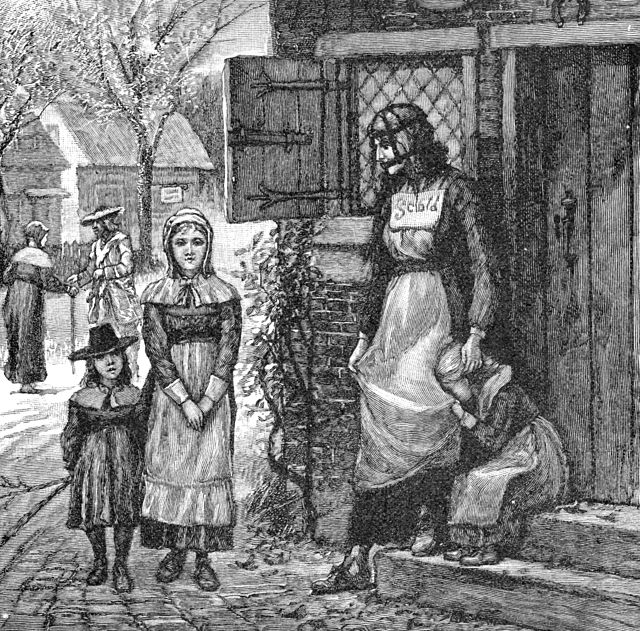A scold's bridle, sometimes called a witch's bridle, a gossip's bridle, a brank's bridle, or simply branks, was an instrument of punishment, as a form of public humiliation. It was an iron muzzle in an iron framework that enclosed the head. A bridle-bit, about 5 cm × 2.5 cm in size, was slid into the mouth and pressed down on top of the tongue, often with a spike on the tongue, as a compress. It functioned to silence the wearer from speaking entirely, to prevent the women from nagging. The scold's bridle was used on women. This prevented speaking and resulted in many unpleasant side effects for the wearer, including excessive salivation and fatigue in the mouth. For extra humiliation, a bell could also be attached to draw in crowds. The wearer was then led around town by a leash.
A branked scold in Colonial New England, from a lithograph in A Brief History of the United States by Joel Dorman Steele and Esther Baker Steele from 1885
18th century scold's bridle in the Märkisches Museum Berlin
16th-century Scottish branks, Kelvingrove Art Gallery and Museum, Glasgow, Scotland
The "Bishop's branks" of St. Andrews
In the common law of crime in England and Wales, a common scold was a type of public nuisance—a troublesome and angry person who broke the public peace by habitually chastising, arguing, and quarrelling with their neighbours. Most punished for scolding were women, though men could be found to be scolds.
Scold's bridles or branks were used as a punishment.[circular reference]
This woodcut shows the wheels on a ducking stool mount which allowed the occupant to be wheeled through the streets before being ducked.





![Scold's bridles or branks were used as a punishment.[circular reference]](https://upload.wikimedia.org/wikipedia/commons/thumb/b/b2/The_Branks_from_Curious_Punishments_of_Bygone_Days_%281896%29_-_02.jpg/327px-The_Branks_from_Curious_Punishments_of_Bygone_Days_%281896%29_-_02.jpg)
